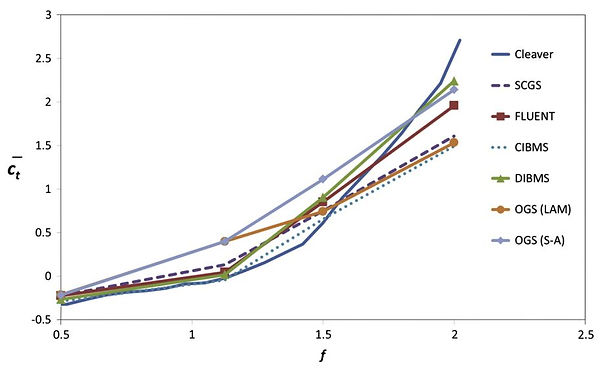
PUBLISHED RESEARCH
Validation of immersed boundary method for the numerical simulation
of flapping wing flight
Tay, W. B., Deng, S., van Oudheusden, B. W., & Bijl, H. (2015).
Computers & Fluids, 115, 226–242. https://doi.org/10.1016/j.compfluid.2015.04.009.
We have been using our in-house immersed boundary method (IBM) solver for almost all our numerical research. Here, we compare the two classes (continuous and discrete forcing) of the immersed boundary method (IBM) for its suitability as a simulation tool for the analysis of the moving wings of the flapping micro aerial vehicles (FMAVs), for flows at Re = 5,000 to 10,000. This is accomplished by comparing between the numerical (IBM and body-conforming grid flow solvers) and experimental results of moving airfoils / wings from literature. Results show that both the continuous and discrete forcing IBM solvers give reasonably accurate results in terms of thrust coefficient. However, the discrete forcing IBM solver is able to achieve smoother thrust variation at a lower grid resolution, which indicates that the thin boundary layer has been better captured. Both the continuous and discrete forcing IBM solvers also give good agreement in terms of vorticity contours plots, compared to the referenced results. There is a
disagreement in the lift coefficient in one test case between the experimental and the numerical results. All the numerical solvers tested (Fluent, in-house grid conforming, in-house overset and IBM solvers) give different results. This could be due to turbulent effects in the experiment. Lastly, we show that the discrete forcing IBM solver can simulate a 3D NACA0012 and fruitfly wing undergoing plunging and complex flapping motion respectively at a Re of 10,000 with good comparison to experiments. This indicates that the IBM solvers are suitable for 3D flapping wing simulations.


Comparison of vorticity contour plots of experimental DPIV results with a) continuous forcing IBM b) discrete forcing IBM c) Overset grid (laminar) solvers

